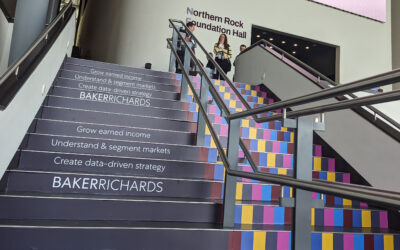What the Romans did for us…
Visitor attractions are embracing innovative approaches to maximising sales and income. We worked with The Roman Baths, one of the UK’s leading heritage attractions, on a new pricing strategy to increase income and spread demand.
Hear more about The Roman Baths’ pricing journey on the Skip the Queue Podcast:
“Everything is worth what its purchaser will pay for it.” You might think that sounds like the economist Adam Smith but the phrase was first coined by the Latin writer Publilius Syrus in the 1st century BC. In other words, as far back as Roman times, there was an inherent understanding that what something is worth varies from one customer to another.
Recognising the truth of this statement is the key to developing an effective pricing strategy. The implication is that it is essential to offer customers a choice of different prices to maximise sales and income. A higher price maximises income from those willing and able to pay more. Cheaper prices mean there is no loss of volume from those who place a lower value on something or have a lower ability to pay for the experience.
Classical economic theory – the price elasticity of demand – tells us that having a range of prices means you can sell more (a lower price maximises volume of sales) and earn more (a higher price maximises income from those willing and able to pay more). However, offering customers a range of prices to choose from is also important from a consumer psychology perspective.
The importance of comparisons
Giving customers a range of prices to choose from means they can make comparisons between different options. This is important because people find it hard to judge things in isolation. Instead, we make decisions by comparing relative differences. For example, we might find it hard to decide if £60 for a flight on a Thursday evening is good value. But when we see that the same flight on Friday morning is £125, this influences our perception that £60 is a good price.
By presenting different price/value trade-offs to a customer, the individual is no longer trying to assess an offer (and whether a price is fair) in isolation. Instead, they are weighing up which is the right option for them.
Crucially, for cultural attractions there are many ways to differentiate the value that is on offer to customers and thus justify differences in price. The key is to find the right pricing strategy in the context of your objectives and what your customers value.
The Roman Baths
The Roman Baths is a scheduled ancient monument, built around Britain’s only hot springs. Managed as a business unit within Bath and North East Somerset Council, it welcomes around 1.2m visitors each year and the profit generated supports the council’s wider work in caring for the most vulnerable members of the local community.
In 2019, with the help of Baker Richards, the Roman Baths introduced a new pricing strategy. The key objective was to maximise income from admissions, with a secondary objective of managing demand to improve visitor experience and secondary spend. We were also tasked with ensuring the following:
- Visitors continue to feel they have paid a fair price for their experience.
- The new pricing structure is accessible to as wide a range of audiences as possible.
- The pricing strategy increases the proportion of web sales.
- The pricing strategy encourages a more even distribution of visitors.
Detailed analysis was undertaken and we identified opportunities to reduce prices, maximising accessibility, as well as increasing prices and varying them in line with demand. Prices were reduced for two-thirds of the year with the largest price increases applied to just 26 days in 2019.
A new discount was also introduced to incentivise early online purchases. A commitment to access for all meant that generous concessionary discounts have been maintained, particularly for families and children, although, as with other prices, these vary in line with demand to incentivise visits at quieter times.
Simon Addison, Heritage Business Manager, notes that the initial impact of the pricing strategy is positive:
“2019 was our busiest ever year, a 2.4% increase in visitors on 2018 and a 15% (£2.33m) uplift in revenue. Web sales have doubled and we’ve seen particularly strong growth in children and families. We’ve also seen a shift towards weekday visiting from weekends and a more even spread of visitor numbers during the most popular summer months. Finally, our value for money, visitor experience and net promoter scores also all increased, indicating that not only have we welcomed more people, but they’ve had an even better time than those who came last year!”
Uniquely individual
While it is inherently beneficial for all organisations to offer customers a range of prices to choose from, and this applies equally to the pricing of memberships and annual passes as well as admissions, a pricing strategy should always be unique. From museums and galleries to palaces and leisure attractions, the context varies depending on the business model, visitor base, patterns of demand and wider organisational objectives. So, when it comes to pricing strategy, we should listen to the Romans courtesy of Monty Python’s Life of Brian: “We are all individuals! We are all different!”
In summary, an effective pricing strategy is the opposite of a Roman toga – it should always respond to an organisation’s unique situation and needs and should never be one-size-fits-all.




